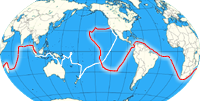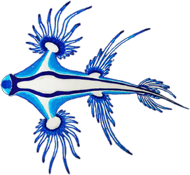After our short stop on Ile Glorieuses we sailed back to Madagascar and went to Maramba Bay. Some other sailor friends were there and loved the bay. So we looked for a nice anchorage between all the rocks inside the bay to be close to the animals living there.
The first thing you notice are the big, black parrots flying around the bay especially in the morning hours and at sunset making lots of noise. Those are greater vasa parrots (Coracopsis vasa) which you can find in Madagascar and on the Comoros. They are colored black-grey with a massive beak and grow up to 50 cm long. They feed on fruits, berries and nuts although some ornithologists believe they also need meat in their diet. This is just being investigated in a research in Madagascar. And if it turns out to be true those great vasa parrots could be the genetic link between parrots and birds of prey and - like no other species of parrots – hunt in the wild. In the meantime another new scientific paper confirmed that those parrots really use tools. In the new study (A novel form of spontaneous tool use displayed by several captive Greater vasa parrots (Coracopsis vasa), Biology Letters) they observed that the parrots use small pebbles or parts of dates to break or grind off small parts of shells which they eat afterward. It mainly happened in the months of March and April, just when the breeding season starts. This probably means they need the calcium for building u the egg shells. Interestingly the male vasa parrots were more interested in the calcium than the female ones. But they also observed that the male parrots regurgitated the calcium before copulating and fed it then to the female ones. A fantastc observation since there are not a lot of animals using tools.
In the Bay we could also see some more Madagascan fish eagles (Haliaeetus vociferoides) really close. One was resting on a tree about 7 m above the water and we could see him sitting there from our sea kayaks. Besides there are lots of egrets in the area which obviously sleep on the rock formations..
Striking were definitely the beautiful baobab trees which you can see everywhere. They really look like upside down trees, as if holding their roots into the air.
On the beach as well as behind the mangroves we could observe sifaka lemurs (probably coquerel-sifaka - Propithecus coquereli) every evening. Sometimes they just jumped from tree to tree and looked at us once in a while. They really look like small cuddly animals, especially when they sit unmoving on the trees and look at you with their big eyes and the long tail. But if they have to move on the ground they look very funny. When you disturb them they jump with their hind legs upright very quickly across the ground towards the nearest tree. This is the first time we have seen this in real and they really do this in the wild!
Furthermore we found some kind of Agamidae, sort of iguanian lizard on the beach as well as a bee-eaters high up in the baobabs. Maramba Bay is a place to stay for a while and who knows what else one can find there.



_looking_at_us_in_the_morning.jpg)

















 >>planned route - join us ...
>>planned route - join us ...